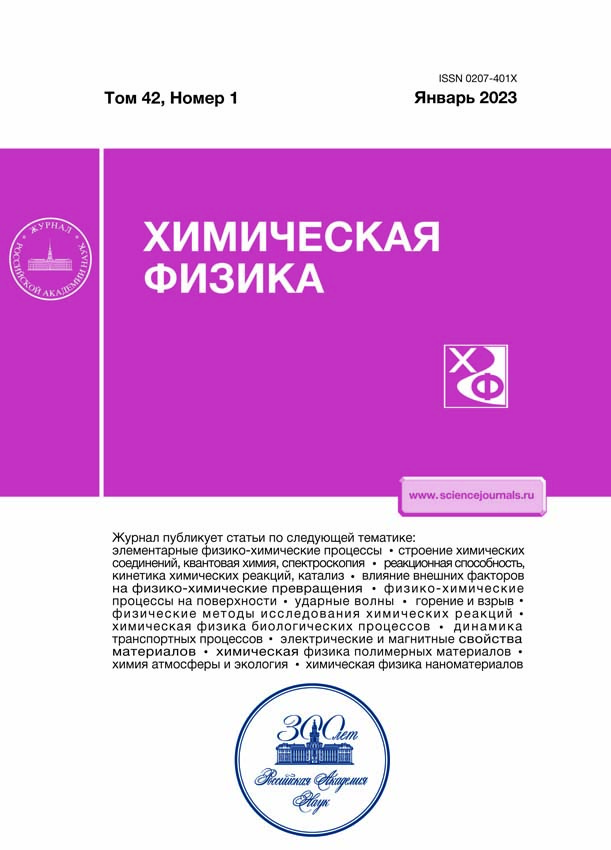Biologically Active UV Radiation in the 21st Century
- Autores: Larin I.K.1
-
Afiliações:
- Talrose Institute of Energy Problems of Chemical Physics, Federal State Budgetary Institution of Science, Semenov Federal Research Center for Chemical Physics, Russian Academy of Sciences, Moscow, Russia
- Edição: Volume 42, Nº 1 (2023)
- Páginas: 84-91
- Seção: Химическая физика атмосферных явлений
- URL: https://rjeid.com/0207-401X/article/view/674918
- DOI: https://doi.org/10.31857/S0207401X23010077
- EDN: https://elibrary.ru/MWUXQH
- ID: 674918
Citar
Texto integral
Resumo
Data on the ozone content in June and January of 1980 and 2100 obtained using the SOCRATES two-dimensional interactive model of the average atmosphere are presented. Based on these data, using the Fast simulation of downward UV doses, indices and irradiances at the Earth’s surface program developed at the Norwegian Institute for Atmospheric Research, the change in the main factors of biologically active solar radiation by the end of the 21st century, including data related to the formation of erythema and vitamin D in humans, is calculated. It is shown that the parameters of biologically active radiation by the end of the 21st century may change compared to 1980; however, this will not pose a significant threat to human health.
Palavras-chave
Sobre autores
I. Larin
Talrose Institute of Energy Problems of Chemical Physics, Federal State Budgetary Institution of Science, Semenov Federal Research Center for Chemical Physics, Russian Academy of Sciences, Moscow, Russia
Autor responsável pela correspondência
Email: iklarin@narod.ru
Россия, Москва
Bibliografia
- Molina M.J., Rowland F. // Nature. 1974. V. 249. P. 810.
- Crutzen P.J. // Geophys. Res. Lett. 1974. V. 1. P. 205.
- Rowland F., Molina M. // Rev. Geophys. Space Phys. 1975. V. 13. P. 1.
- Wayne R.P. Chemistry of Atmospheres. 2nd ed. Oxford, U.K.: Clarendon Press, 1991. P. 806.
- https://ru.wikipedia.org/wiki/Монреальский_протокол
- Роун Ш. Пятнадцатилетняя эволюция неожиданной глобальной опасности. Пер. с англ. М.: Мир, 1992. С. 320.
- UNEP. Environmental effects of ozone depletion and its interactions with climate change: Assessment, 2014 // J. Photochem. Photobiol. Sci. 2015. P. 7–184.
- Жданова Е.Ю. Дис. … канд. геогр. наук. М.: МГУ, 2016
- Engelsen O., Kylling A. // Opt. Engin. 2005. V. 44 Issue 4. 041012.
- Rationalizing nomenclature for UV doses and effects on humans. WMO/GAW Report N 211. Vienna, Austrian: Commission Internationale de l’Eclairage (CIE), 2006.
- Fitzpatrik T.B. // Arch. Dermatol. 1988. V. 124. P. 869.
- Webb A.R., Engelsen O. // Photochem. Photobiol. 2006. V. 82. Issue 6. P. 1697.
- Terushkin V., Bender A., Psaty E.L., Engelsen O., Wang S.Q., Halpern A.C. // J. Amer. Acad. Dermatol. 2010. V. 62. Issue 6. P. 929. e1.
- Dowdy J.C., Sayre R.M., Holick M.F. // J. Steroid Biochem. Molec. Biology. 2010. V. 121. Issue 1–2. P. 328.
- World Meteorological Organization Global Atmosphere Watch. Report No 95, 1994.
- http://acd.ucar.edu/models/SOCRATES/
- http://tntcat.iiasa.ac.at:8787/RcpDb/dsd?Action=htmlpage&page=welcome
Arquivos suplementares













